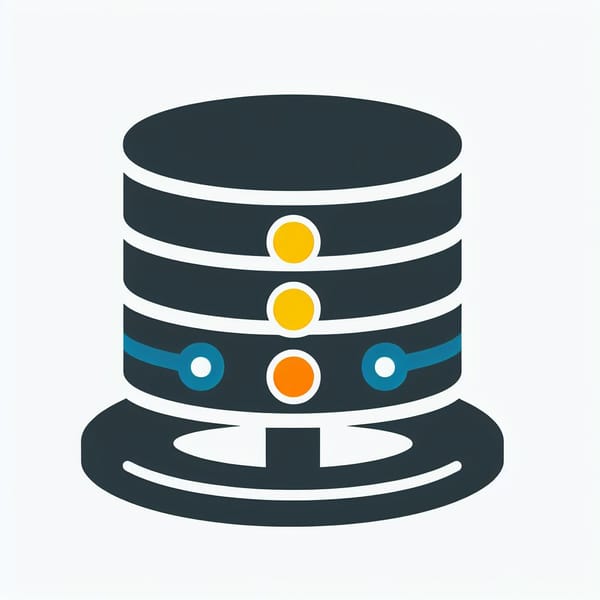Wikipedia is an irresistable rabbithole

As a software engineer, I'm intimately familiar with the thrill of solving complex problems, the satisfaction of optimizing code, and the endless pursuit of knowledge in a rapidly evolving field.
Yet.. there's another realm that has captured my attention and countless hours of my time (and I'm sure many are guilty of this as well), offering a unique blend of intellectual stimulation and addictive exploration: Wikipedia.
I don't even binge on it that often, but when I do.. it always goes on into a rabbithole I never thought I'd encounter.
The Graph of Human Knowledge
At its core, Wikipedia represents something far more fascinating than just another informational website. For those of us who work with complex systems and data structures, it embodies a vast, interconnected web of human knowledge, constantly evolving and expanding.
The structure of Wikipedia bears a striking resemblance to the graph data structures we often work with in software engineering. Each article serves as a node, with hyperlinks acting as edges connecting related concepts. This network of information creates a playground for curious minds, especially those trained to navigate and analyze complex systems.
Consider the parallels between Wikipedia's structure and common data structures we use in software development:
- Directed Graph: Wikipedia's link structure forms a directed graph, where articles (nodes) are connected by hyperlinks (directed edges).
- Tree Structure: Categories and subcategories in Wikipedia form a hierarchical tree structure, similar to file systems or organizational charts.
- Hash Table: The search functionality in Wikipedia can be thought of as a hash table, where article titles are keys that quickly lead to the corresponding content.
Understanding these structural similarities can help explain why software engineers often find Wikipedia so engaging – it appeals to our innate sense of structure and organization while providing an endless sea of content to explore.

The Accidental Time Traveler
One of the most captivating aspects of Wikipedia is its ability to transport us through time and space, often in unexpected ways. This phenomenon, affectionately known as "Wiki rabbit holes," is a testament to the power of interconnected information and our own curiosity.
Let me share a personal anecdote that illustrates this point:
Last week, I set out to quickly look up the time complexity of quicksort for a university assignment. Two hours later, I found myself deep in an article about the Antikythera mechanism, an ancient Greek analog computer.
Here's how that journey unfolded:Quicksort article → Mention of Tony Hoare, its inventorTony Hoare's page → His work on communicating sequential processesCSP article → Its influence on concurrent programming languagesConcurrent programming → Real-time computing applicationsReal-time computing → Its use in astronomy and celestial mechanicsCelestial mechanics → Ancient methods of predicting celestial eventsAncient astronomy → The Antikythera mechanism
We follow threads of interest, make unexpected connections, and continuously expand our understanding of the world around us.
It's very similar to how many use the software, Obsidian, to create connections and links to related pages in their markdown pages.
The Joy of Unexpected Connections
As humans, we often find joy in discovering unexpected connections between seemingly unrelated concepts. Wikipedia excels at facilitating these serendipitous discoveries. The ability to jump from one topic to another, following a trail of hyperlinks, mimics the way our minds make associations and draw parallels between different ideas.
Here's another example of how a simple query about a programming concept led to a fascinating journey through history and science:
- Started by looking up information about recursion in programming.
- Came across the concept of "turtles all the way down" in the article's "In popular culture" section.
- This led to reading about the "unmoved mover" in philosophy and cosmology.
- From there, explored articles on the Big Bang theory and cosmic inflation.
- Inflation theory led to reading about quantum fluctuations and the uncertainty principle.
- This circled back to computer science with quantum computing and its potential impact on cryptography.
- Ended up reading about post-quantum cryptography and the race to develop new encryption methods.
This intellectual journey, spanning computer science, philosophy, cosmology, and quantum physics, exemplifies the kind of interdisciplinary exploration that Wikipedia facilitates. It's this ability to connect disparate fields of knowledge that makes Wikipedia particularly addictive for those with curious, analytical minds.

The Dopamine Hit of Learning
There's a neurochemical aspect to Wikipedia addiction that resonates particularly well with the software engineering mindset. Every new piece of information, every "aha!" moment when we connect two previously unrelated concepts, triggers a small dopamine release in our brains. This is the same neurotransmitter associated with the satisfaction we feel when solving a tricky bug or optimizing a piece of code.
Dr. Judy Willis, a neurologist and former teacher, explains that the dopamine release associated with learning new information can be just as rewarding as winning money or eating chocolate. For those of us who thrive on problem-solving and continuous learning, Wikipedia provides an endless stream of these small, rewarding moments.
Consider the following cycle that often occurs during a Wikipedia session:
- Encounter an unfamiliar term or concept
- Feel a sense of curiosity and mild cognitive dissonance
- Click the link to learn more
- Experience a small sense of accomplishment and pleasure upon understanding
- Notice new, related concepts in the article
- Repeat from step 1
This cycle, driven by our brain's reward system, can keep us engaged for hours, constantly seeking the next bit of knowledge and the accompanying dopamine hit.
The Flow State and Wikipedia
Another aspect of Wikipedia's addictive nature is its ability to induce a flow state, a concept popularized by psychologist Mihály Csíkszentmihályi. Flow is a mental state of complete absorption in an activity, often characterized by a sense of energized focus, full involvement, and enjoyment in the process of the activity.
As software engineers, we're familiar with entering flow states while coding or solving complex problems. Wikipedia browsing can induce a similar state, where time seems to fly by as we immerse ourselves in a sea of interconnected knowledge.
The conditions that facilitate flow states align well with the Wikipedia experience:
- Clear goals (finding information on a specific topic)
- Immediate feedback (instantly accessing new information)
- A balance between challenge and skill (learning new concepts without being overwhelmed)
- A sense of control (choosing which links to follow)
- Deep concentration (focusing on absorbing new information)
Understanding these psychological and neurological factors can help explain why Wikipedia browsing can be so captivating and, at times, difficult to stop.
Falling Down the Rabbit Hole: Interesting Articles
To illustrate the addictive nature of Wikipedia browsing, let's look at a few examples of articles that are particularly captivating for those with a technical mindset. Each of these can serve as a starting point for hours of fascinating exploration:
- The Halting Problem This article delves into one of the fundamental concepts of computer science, discussing the limits of computation and the philosophical implications of unsolvable problems. It's a great starting point for a journey into theoretical computer science and the foundations of our field. Key points of interest:
- Alan Turing's proof of the problem's undecidability
- Connections to Gödel's incompleteness theorems
- Implications for software verification and bug detection
- Related decidable and undecidable problems in computer science
- Brainfuck An esoteric programming language that, despite its crude name, offers fascinating insights into the nature of Turing completeness and the minimum instructions required for computation. Reading about this language often leads to explorations of other esoteric languages and the limits of programming paradigms. Interesting aspects:
- The language's minimalist design (only 8 commands)
- Examples of Brainfuck programs and their equivalents in other languages
- Discussion of Turing completeness and computational universality
- Links to other esoteric programming languages like Piet and Whitespace
- RSA (cryptosystem) This article not only explains one of the most widely used public-key cryptosystems but also touches on number theory, the history of cryptography, and the ongoing challenges in information security. It's a perfect blend of mathematics, computer science, and real-world applications. Key topics:
- The mathematical foundations of RSA (modular arithmetic, prime factorization)
- The history of public-key cryptography
- Practical implementations and optimizations of RSA
- Attacks on RSA and their mitigations
- The impact of quantum computing on RSA's security
- Byzantine fault tolerance A concept crucial to distributed systems and blockchain technology, this article opens up a world of exploration into consensus algorithms, fault-tolerant design, and the challenges of building reliable systems in unreliable environments. Interesting tangents:
- The Byzantine Generals' Problem and its variations
- Practical Byzantine Fault Tolerance (pBFT) algorithm
- Applications in blockchain and cryptocurrency systems
- Connections to game theory and mechanism design
- Real-world examples of Byzantine faults in computer systems
- Quantum supremacy This topic bridges computer science, physics, and the future of computation. It's a gateway to articles on quantum mechanics, the limits of classical computing, and the potential revolutionary impact of quantum computers on fields like cryptography and optimization. Fascinating aspects:
- The race between tech giants to achieve quantum supremacy
- Debate over the practical significance of quantum supremacy demonstrations
- Potential applications of quantum computing in various fields
- Challenges in building and scaling quantum computers
- The impact on current encryption methods and the development of post-quantum cryptography
These articles serve as excellent entry points to vast areas of knowledge. Each link within these articles can lead to new discoveries and connections, fueling the addictive cycle of learning and exploration that makes Wikipedia so captivating.

The Pitfalls of Wikipedia Addiction
While the vast sea of knowledge on Wikipedia can be incredibly enriching, it's also important to acknowledge its potential downsides, especially for those of us prone to falling into "just one more article" syndrome.
1. Time Management Challenges
Wikipedia's addictive trait can lead us to spend hours chasing down every last detail on a Wikipedia topic, long past the point of diminishing returns. This can result in:
- Neglecting important tasks or deadlines
- Disrupted sleep patterns due to late-night reading sessions
- Reduced productivity in our primary work
2. Information Overload
The sheer volume of information available can sometimes be overwhelming, leading to:
- Difficulty in retaining and processing all the consumed information
- Cognitive fatigue from trying to absorb too much diverse information in a short time
- Potential confusion when dealing with conflicting information or edits in progress
3. Shallow Learning
While Wikipedia is excellent for getting an overview of a topic, relying on it exclusively can sometimes lead to:
- A false sense of expertise in topics we've only briefly skimmed
- Missing out on the depth that specialized textbooks or courses can provide
- Difficulty in critically analyzing information due to the rapid consumption of facts
4. Distraction from Practical Application
For software engineers, there's a risk that excessive Wikipedia browsing can become a form of procrastination, preventing us from:
- Applying the knowledge we've gained to real-world problems
- Engaging in hands-on coding practice
- Developing our own original ideas and solutions
Conclusion
In a world that can sometimes feel divided, Wikipedia stands as a shining example of global collaboration. People from all walks of life, across countless cultures and languages, come together to build this vast repository of information. It's a reminder that, at our core, humans are naturally curious beings who delight in learning and sharing what we know.






